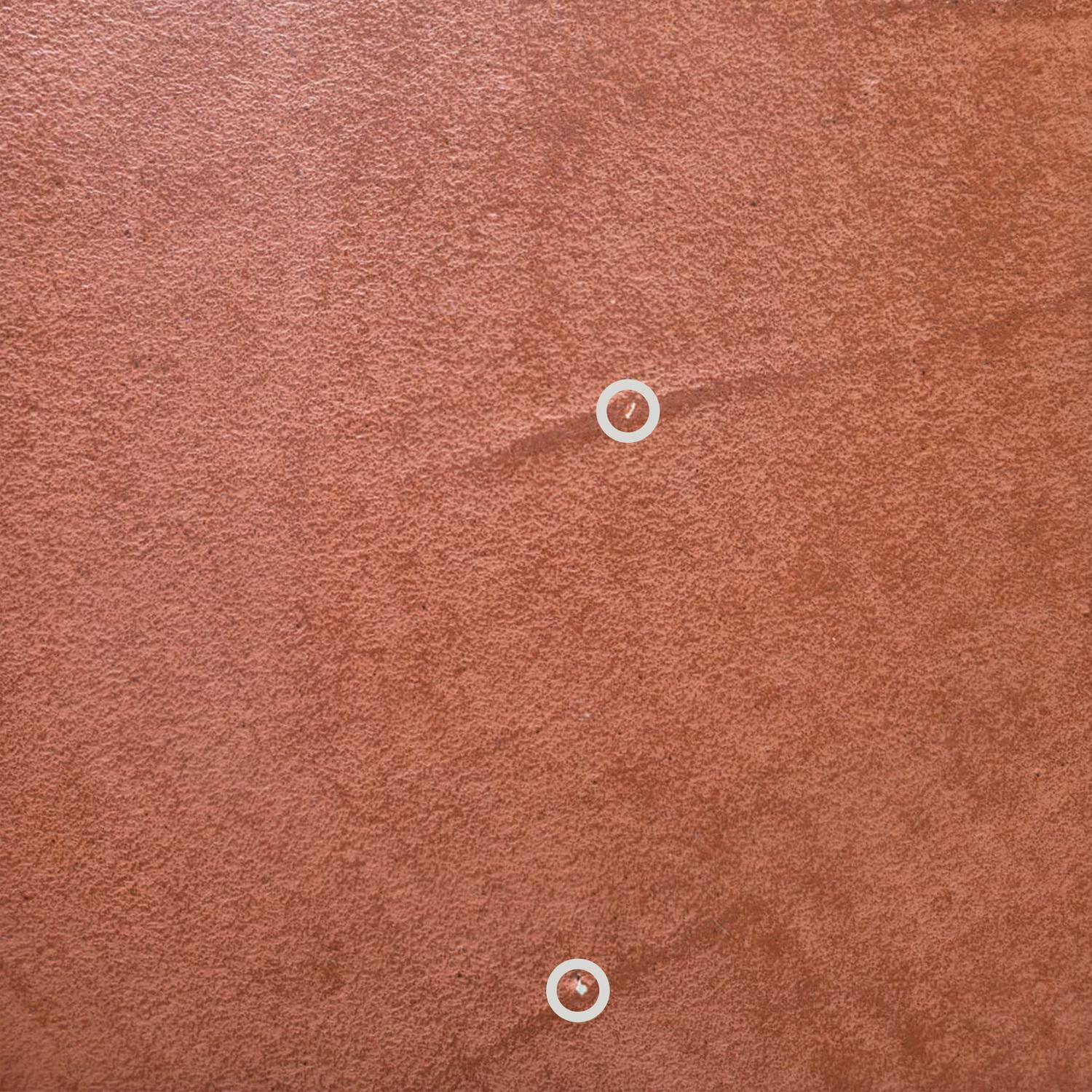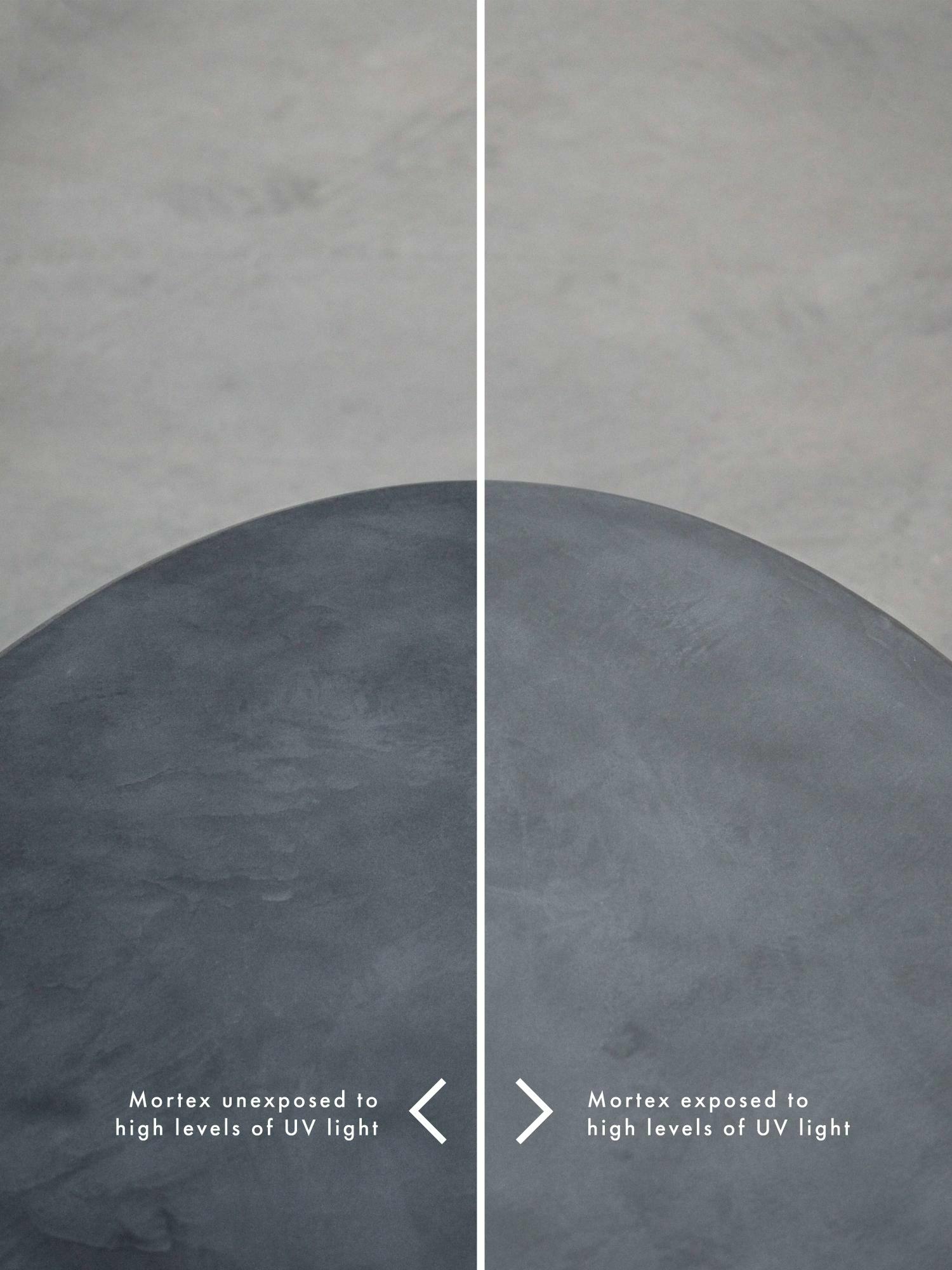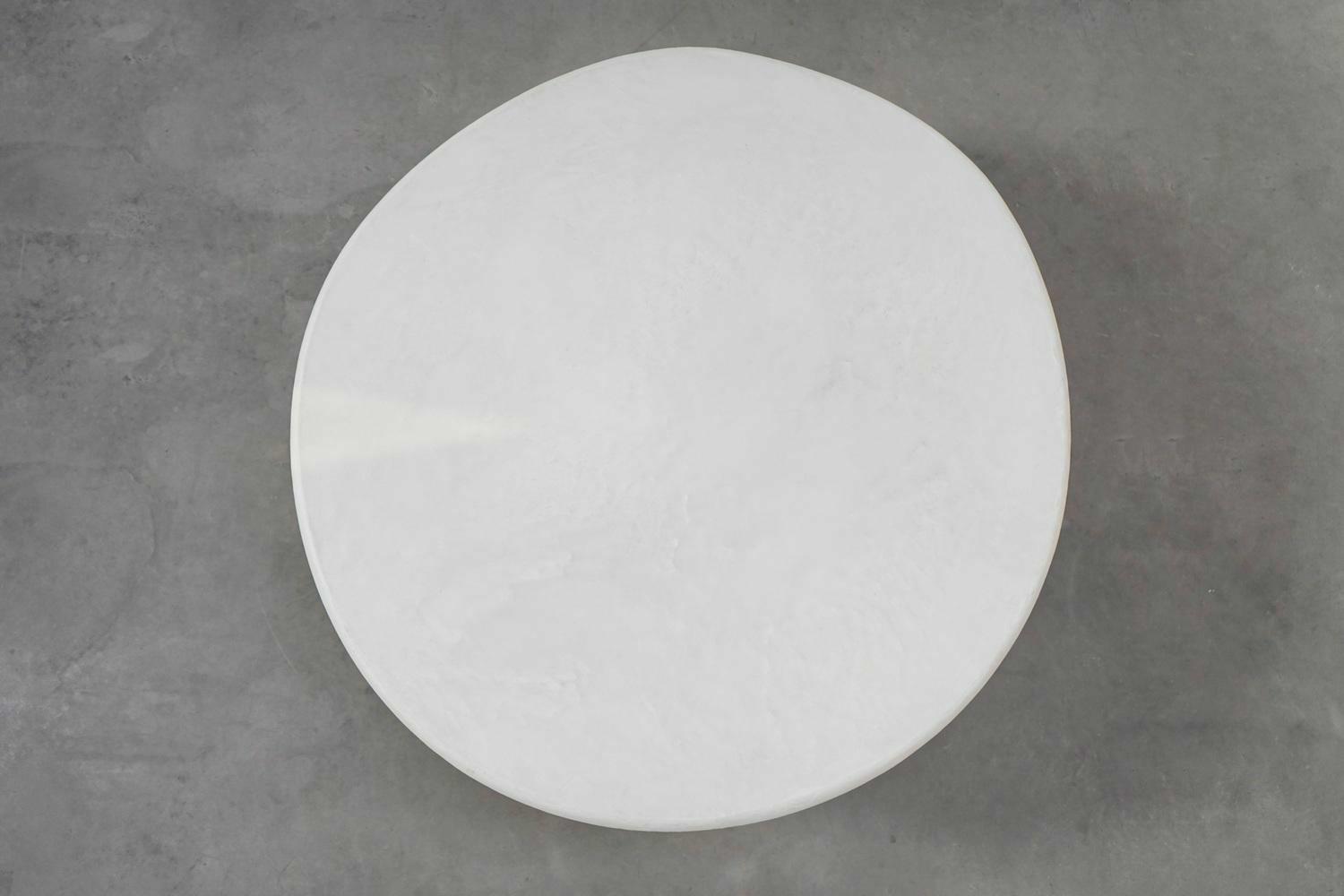Mortex material information
Mortex is a handcrafted finishing technique that gives each piece a unique and distinctive look. It is applied entirely by hand, resulting in a perfectly imperfect surface with subtle color variations, natural irregularities, and slight unevenness. These qualities are not flaws but part of the material’s authentic charm.
Mortex is made from a composition of lime, acrylic, and natural pigments. The colors are manually mixed, so the final shade may vary slightly from the sample, which serves only as a reference. The final appearance is also influenced by the polishing process and the protective finishing coat, making every piece truly one of a kind.
Available colorsCommon imperfections
Uncolored Minerals
Mortex is a natural composition of lime, acrylic, pigments and minerals. Within this mixture, there are occasionally minerals that do not absorb the colored pigments during the process. These minerals remain white and may appear as small dots on the surface of your Muundo product.
While not many minerals behave this way, it can happen. These white spots are not a defect but a natural imperfection that reflects the authentic character of the material. They are part of what makes each Muundo piece unique.
UV & Patina
Sunlight’s ultraviolet (UV) rays naturally affect all organic and mineral-based materials over time. Because Mortex is crafted with lime, acrylic, and natural pigments, it develops a living surface that reacts much like other outdoor materials.
-
Gentle lightening is normal. UV exposure gradually softens the pigments, causing the tone to fade a shade or two. This is purely cosmetic and does not affect the durability or strength of the piece.
-
Exposed areas change first. Surfaces that face the sun—such as tabletops or horizontal planes—will lighten sooner than vertical or shaded areas.
-
The color blends over time. With ongoing exposure, the contrast between lighter and darker areas diminishes, creating a balanced, softly weathered patina across the whole surface.
Occasional cleaning and rotating your furniture can help the patina develop more evenly, but some mellowing is inevitable. This natural transformation is not a flaw—it’s part of the material’s charm and what makes each Mortex piece unique.
Visible Strokes & Tracks
Mortex is applied using an artisanal hand technique. With a plaster trowel, the material is carefully spread across the surface of the table. As it dries, the movements of the trowel remain visible, creating characteristic strokes or tracks.
These marks are not defects—they are an integral part of the craftsmanship that makes each table unique. Because every piece is made by hand, no two surfaces will ever look the same.
The visibility of these patterns also depends on the chosen color. For example, with the shade Salt, the strokes often stand out more clearly and may show fine grey lines. In other tones, they may appear more subtle.
This variation is a natural expression of both the Mortex material and the artisanal technique behind it.
Edge Finishing
The edges of our tables are finished entirely by hand, just like the tabletop itself. Because this is an artisanal process, the edges may show slight irregularities or variations.
These small imperfections are not flaws but a natural result of the craftsmanship and the Mortex technique. They highlight the individuality of each piece and contribute to the authentic character that only a handmade product can offer.






